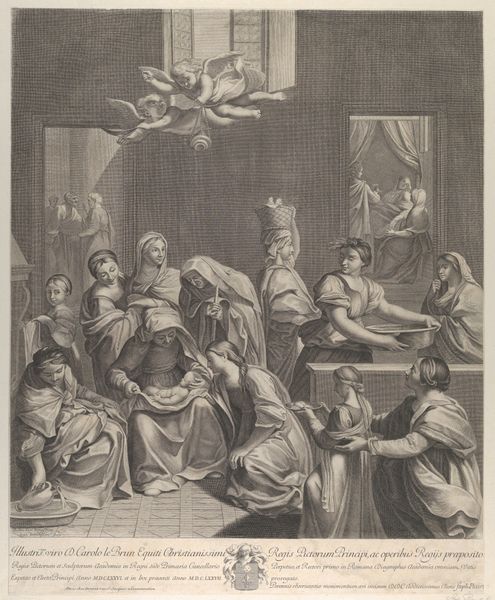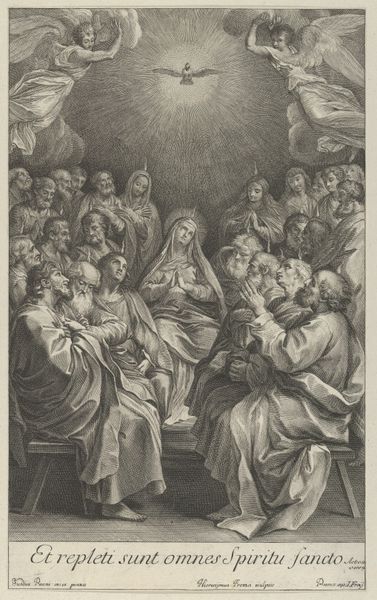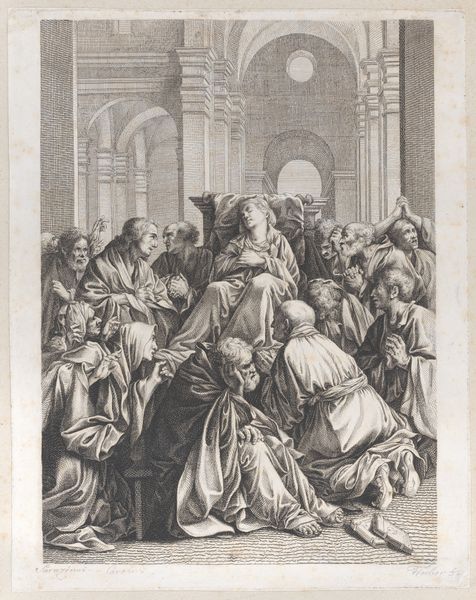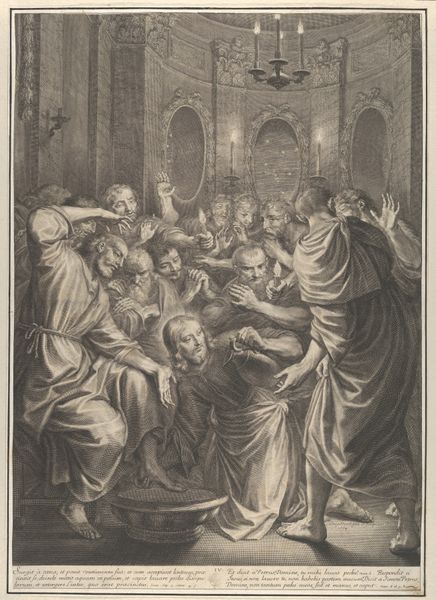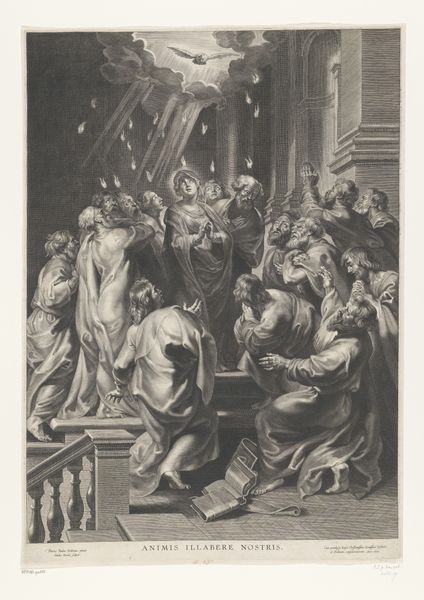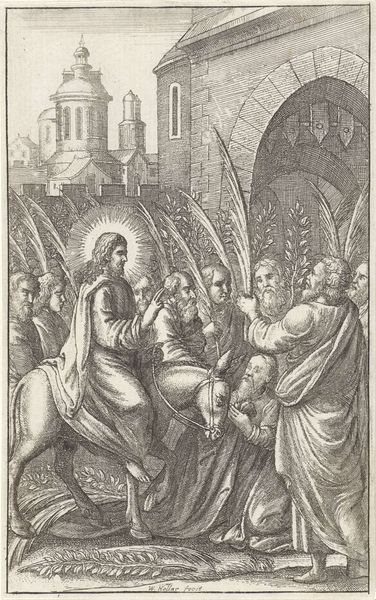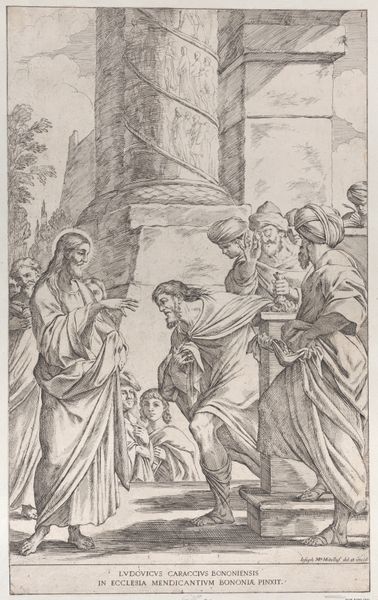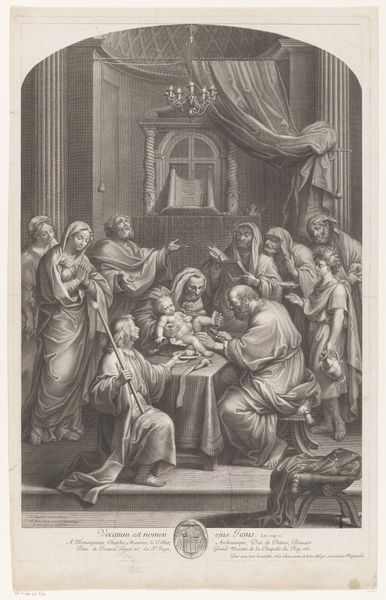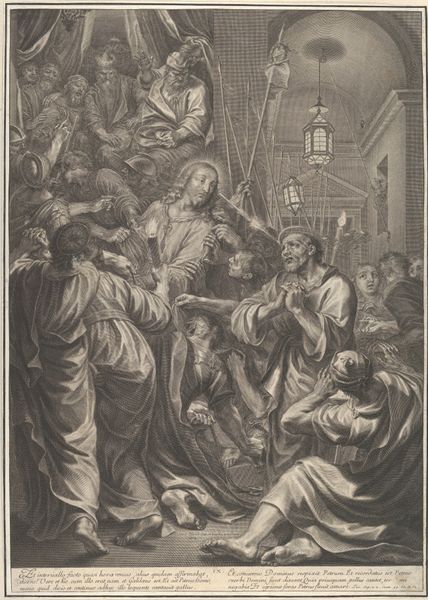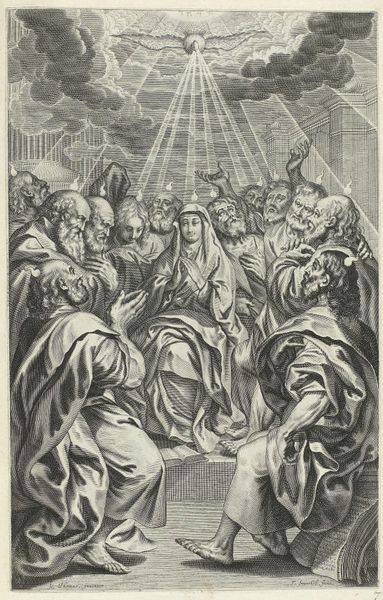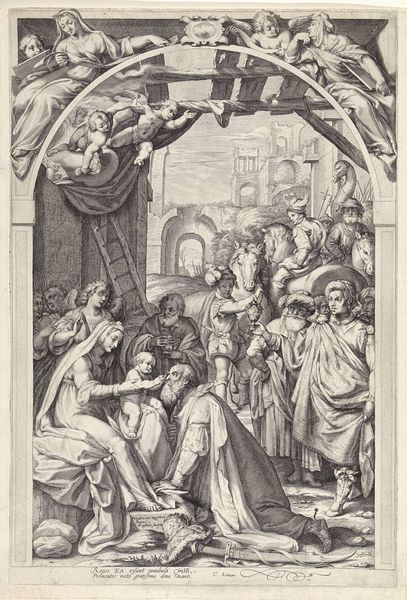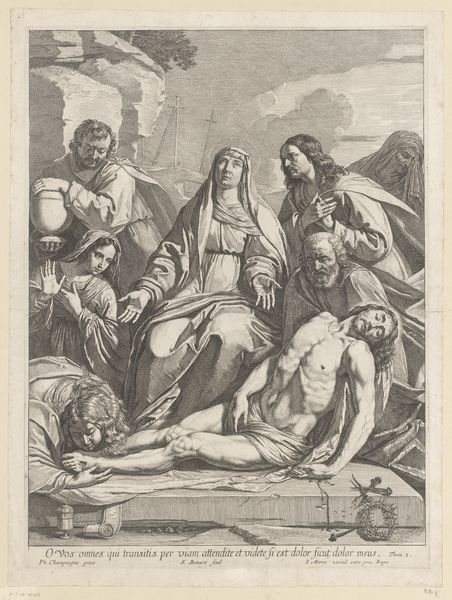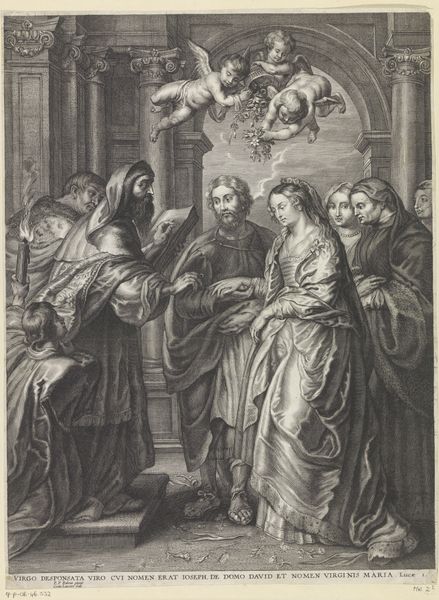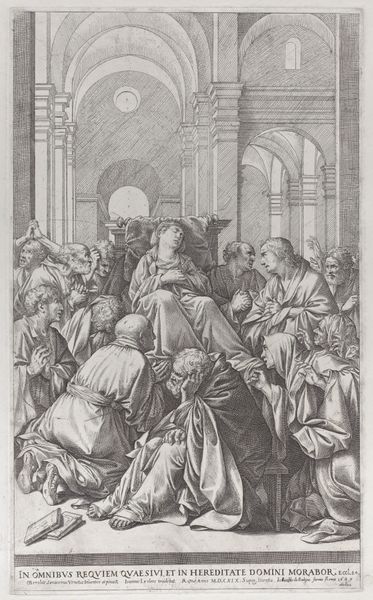
The Pentecost, with the Apostles and the Virgin sitting in a circle, the Holy Spirit appearing above them, and a donor kneeling at left 1729 - 1740
0:00
0:00
drawing, print, engraving
#
drawing
#
baroque
# print
#
figuration
#
history-painting
#
engraving
Dimensions: Plate: 17 9/16 × 11 1/4 in. (44.6 × 28.6 cm) Sheet: 20 13/16 × 15 1/4 in. (52.9 × 38.8 cm)
Copyright: Public Domain
Curator: This engraving, dating roughly from 1729 to 1740, presents "The Pentecost" with the Apostles and the Virgin. It’s presently held at The Metropolitan Museum of Art. Editor: My immediate feeling is one of hushed anticipation, like holding my breath just before a major event. The swirling lines radiating from the dove certainly amplify the dramatic tension. Curator: Precisely. It’s an engraving by Frédéric Horthemels after Gaudentio Ferrari. The architecture has this interesting tension between the Roman-inspired arches and something resembling a stage. Horthemels lived and worked during the period of Louis XIV, known for promoting centralized royal power. Editor: Power that very conspicuously comes from above in this composition. Notice how the dove, representing the Holy Spirit, literally floods the gathering with divine light. I think Horthemels manages to subtly interrogate the very *concept* of institutional authority and sacred power, showing how deeply infused the political climate was within sacred life. It almost looks like a spotlight. Curator: I agree. The work certainly illustrates the influence of power on both the creator and the consumers of the work. But, beyond just the sociopolitical implications of religious imagery, Horthemels also seemed interested in documenting collections, almost archiving. In 18th century France, engravings had that function for collectors: this rendering after Gaudenzio Ferrari’s original painting became a stand-in or simulacrum, but one available for much wider distribution and viewing. Editor: So, it wasn't necessarily about capturing some spiritual essence, but more about cataloging art, and disseminating the experience of art to new audiences beyond wealthy patrons. Is it fair to suggest this accessibility, even if through prints, had democratic underpinnings? It seems significant given the historical era. Curator: A provocative thought! By widening the circle of engagement, new kinds of spectatorship emerge— potentially shifting the understanding of who is privileged to experience the "divine", as expressed through artistic expression. Thank you for your insight. Editor: My pleasure, seeing familiar narratives with fresh eyes is something art excels at!
Comments
No comments
Be the first to comment and join the conversation on the ultimate creative platform.
